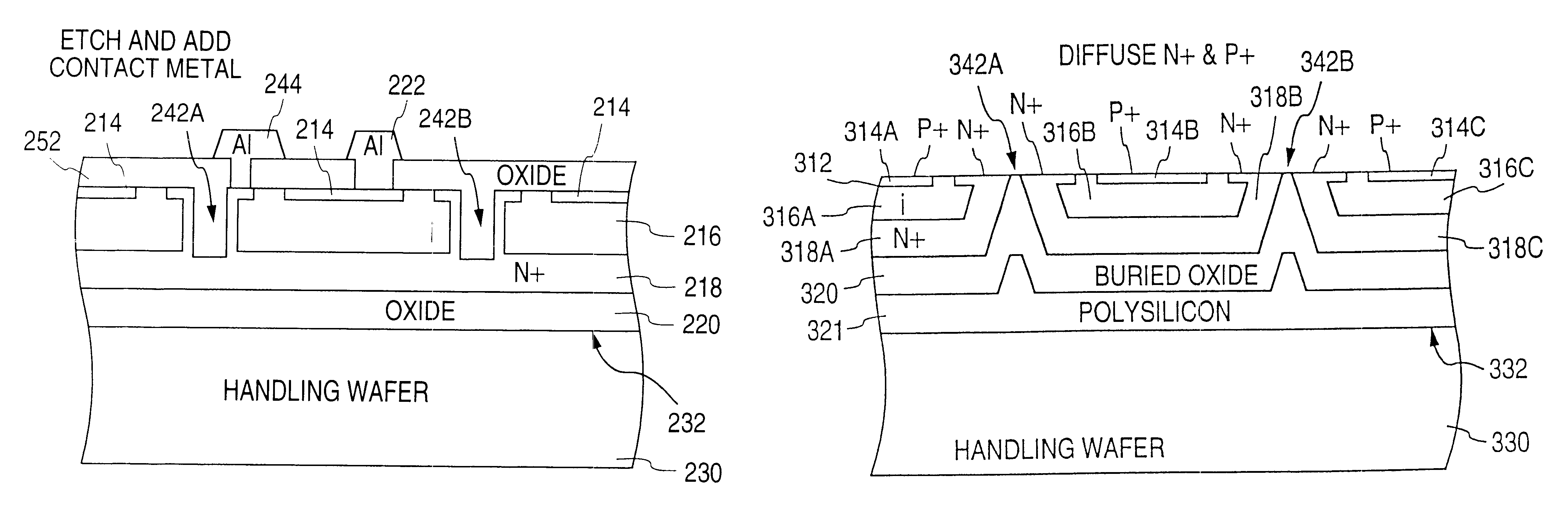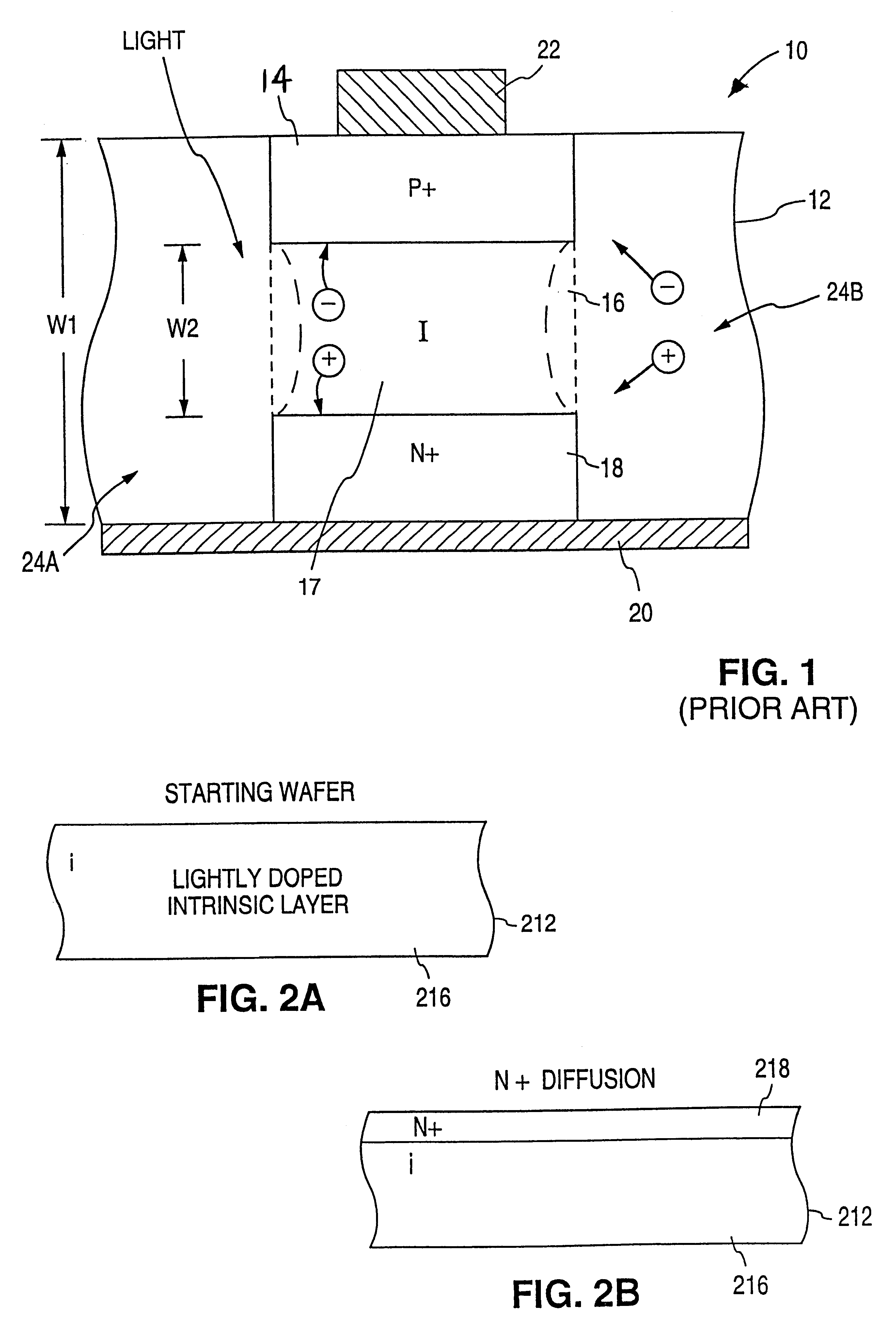Process for producing an isolated planar high speed pin photodiode with improved capacitance
a high-speed pin and photodiode technology, applied in the field of improved, can solve the problems of reducing the yield rate affecting the efficiency of the pin photodiode, and the general practicability of thin wafers over this limit, so as to prevent the generation of slowly diffusing carriers and improve the dielectric isolation of the backside.
- Summary
- Abstract
- Description
- Claims
- Application Information
AI Technical Summary
Benefits of technology
Problems solved by technology
Method used
Image
Examples
Embodiment Construction
FIGS. 2A-L describe an improved PIN photodiode fabrication method which utilizes a standard thickness handling wafer with an isolating oxide layer grown on its surface that is bonded to the N.sup.+ diffusion side of a fabrication wafer. The handling wafer allows the intrinsic region of the fabrication wafer to be lapped to a thin thickness, as required for optimum performance of the PIN photodiode, while the handling wafer provides mechanical rigidity needed for processing. N.sup.+ and P.sup.+ regions are then diffused into the fabrication wafer. Next, diode trenches are etched around the periphery of each photodiode down to the N+ region. The sidewalls of the trenches are then N+ diffused before being covered with an oxide layer and then filled with polysilicon. Finally, coplanar metal contacts to the N+ and P+ regions are formed.
The process begins with fabrication wafer 212 of FIG. 2A, which is lightly N doped to form an intrinsic layer 216 which will later become the intrinsic re...
PUM
 Login to View More
Login to View More Abstract
Description
Claims
Application Information
 Login to View More
Login to View More - R&D
- Intellectual Property
- Life Sciences
- Materials
- Tech Scout
- Unparalleled Data Quality
- Higher Quality Content
- 60% Fewer Hallucinations
Browse by: Latest US Patents, China's latest patents, Technical Efficacy Thesaurus, Application Domain, Technology Topic, Popular Technical Reports.
© 2025 PatSnap. All rights reserved.Legal|Privacy policy|Modern Slavery Act Transparency Statement|Sitemap|About US| Contact US: help@patsnap.com



